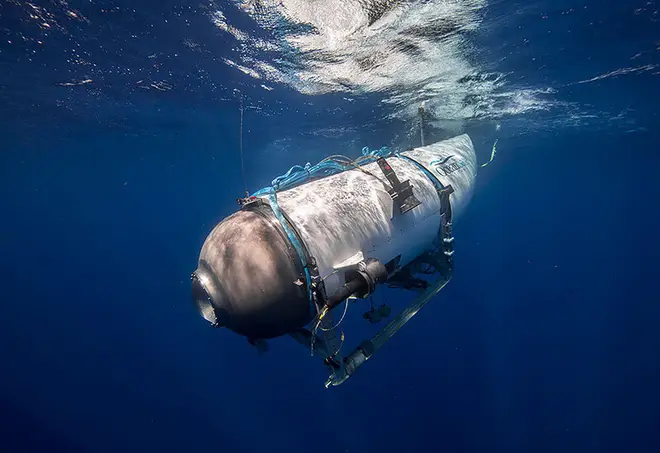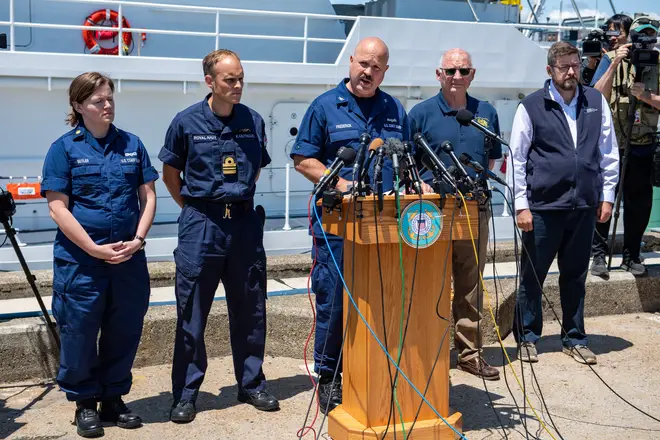
Nick Abbot 10pm - 1am
22 June 2023, 07:01

Delay in authorising private groups equipped with state-of-the-art technology to aid in the search for the missing Titan submersible may have resulted in precious time lost.
It is claimed that a company, possessing a vehicle capable of reaching depths of 20,000 feet, had applied to participate in the search as early as Monday but approval was granted only today.
The submersible, operated by OceanGate Expeditions, has been missing since Sunday, with five individuals on board including British billionaire Hamish Harding, OceanGate CEO Stockton Rush, a French navy veteran, and a businessman accompanied by his son.
While the US Coast Guard (USCG) has been engaged in an intensive search, alongside British and French teams, allegations have arisen suggesting that the Coast Guard delayed seeking assistance from private groups until last night.
A source, close to the rescue mission, has criticised the leadership for what they consider "institutional arrogance, politics, and incompetence" in their failure to promptly authorize rescue teams.
Concerns have been raised regarding the timeliness of the approval, as the sub's oxygen supply is rapidly depleting.
Despite immediate offers of assistance from the search and rescue community upon learning about the missing sub, approval was allegedly hindered by unwarranted delays.


Rescuers race against clock after noises heard from Titanic vessel search area
Read more: Has the Titanic sub been found? Timeline of events and latest updates
In the race against time to locate the Titan submersible, advanced underwater search equipment has already been deployed to scour the depths of the Atlantic Ocean.
Currently, two submersibles capable of descending 20,000 feet below the surface are spearheading the underwater search, with further equipment en route.
Coast Guard officials have confirmed the deployment of specialized ships equipped with tools that could facilitate the retrieval of the sub from the seabed if located.

The explorer who narrowly avoided trip on missing OceanGate sub
As the clock ticks down, additional equipment, including remote-operated vehicles (ROVs) designed to detect acoustic signals, is expected to arrive, albeit as late as tomorrow morning.
Hopes rest upon the Victor 6000 ROV, renowned for its capability to reach depths of 20,000 feet, which is being urgently dispatched to the search area.
If located, the Victor 6000 may affix a cable to the sub, enabling it to be hoisted to the surface with the aid of the Flyaway Deep Ocean Salvage System—an advanced winch that successfully retrieved a helicopter from a depth of 19,075 feet in 2021.
The Victor 6000 is presently embarked upon the French-flagged vessel Atalante, owned by Ifremer.
Another ROV, the Odysseus 6K, capable of diving to depths of 19,000 feet, is owned by US-based Pelagic Research Services (PRS). PRS has confirmed the deployment of this vehicle to assist in the search.
While reports suggest that the ROV has landed in Newfoundland, uncertainty looms over its timely arrival at the rescue site. However, the US Navy-owned CURV-21, another ROV qualified for the required depth, has yet to be dispatched.
The search area for the missing Titan sub now spans an expansive 14,000 square miles—twice the size of Connecticut.